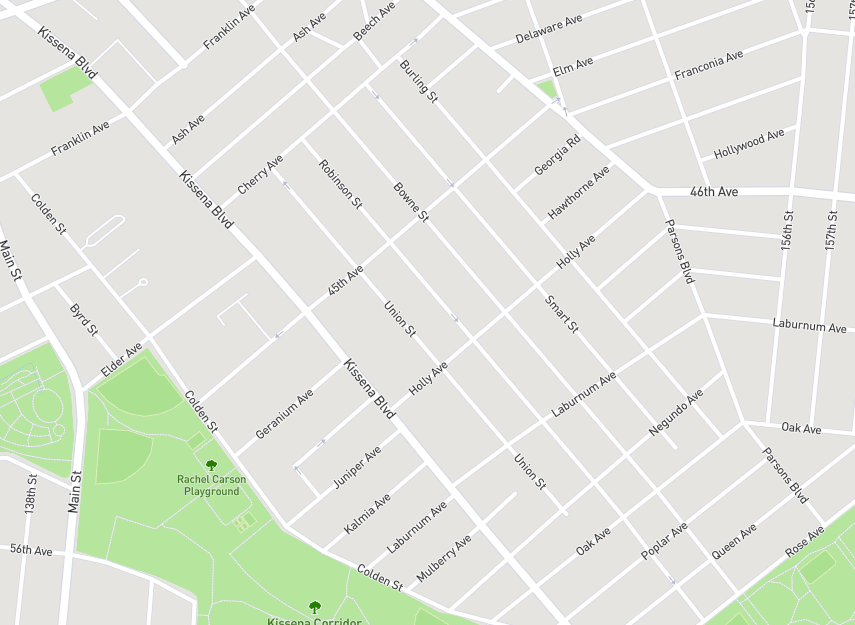9. Botanical Streets of Queens

Another example of botanical street names pops up in Flushing, Queens where there are more than ten streets named after trees or other plants. Ranging from common names such as Ash Avenue and Oak Avenue to scientific names Kalmia Avenue (Kalmia is the genus for a variety of laurels) and Negundo Avenue (Acer negundo is the official name for the box elder tree). While these streets are not as evenly laid out as in the other neighborhoods, with perfect right angles or even distances between blocks, there is a method to the order of how these streets are named.
Starting with Ash Avenue in the northwest to Rose Avenue in the southeast, the street names in Flushing follow an alphabetical pattern along with their horticultural roots. Ash, Beech, and Cherry cover the first three letters. Not shown on the map above is Dahlia Avenue, which borders the Queens Botanical Garden to the north. From there, either Elm or Elder Avenues can come next, but there is no street beginning with “f.” (Perhaps the phonetic reading of 45th Avenue, right between Elder and Geranium, fulfills the “f” requirement.)
After Geranium Avenue comes Holly, Juniper, Kalmia, Laburnum and Mulberry Avenues, with a noticeable lack of a plant starting with the letter “i.” Negundo, Oak, and Poplar Avenues take us then to Quince Avenue, a non-native species of flowering tree most commonly found in Turkey and China. While the Mapbox map above lists the street between Poplar and Rose as Queen Avenue, the street is actually called Quince Avenue, according to street signs visible on Google Streetview.
Unfortunately, all of the reported street trees in this neighborhood are American Basswoods, which limits the ecological diversity of the area to simply the street names.
Whether they honor war heroes, English counties, or different fruits, New York street names provide more than a simple geographic marker by offering insight into the history of the neighborhood.





